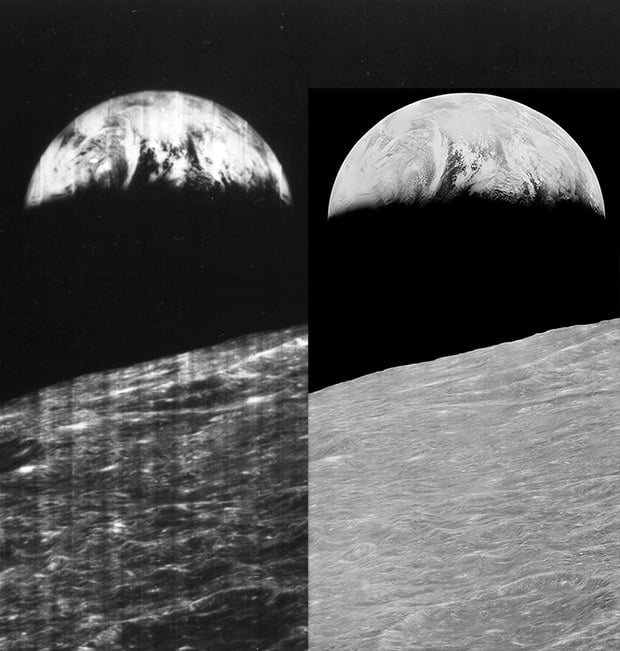Video Offers a Glimpse Into NASA’s Film Digitization Efforts in an Old McDonald’s
In July of last year, we introduced you to the Lunar Orbiter Image Recovery Project (LOIRP), an effort by the NASA Ames Research Center to digitize some 48,000 pounds of 70mm tape shot by the five lunar orbiters that were sent up to photograph the surface of the moon in preparation for the Apollo missions.
The video was put together by Bloomberg Businessweek‘s Ashlee Vance, who got to meet Wingo and see the inside of the abandoned McDonald’s — creatively renamed McMoon’s — that the project calls home.
Piles upon piles of tapes take up the abandoned fast food joint, as Wingo and his team work tirelessly to digitize the old tapes using $2,000 computers (and one very rare machine) that can now do what was impossible in the 1960s when the photos were taken.

Given the amount of time that Wingo spends staring at photos of the surface of the moon, you’d think he’d get sick of it, but when Vance asks him if that’s the case, he replies by calling himself a “lunatic.”
“I really want this material to be conserved,” adds Wingo. “Part of scientific validity is to be able to come back to the original sources, and if you can’t do that you don’t have science.”
To find out more about LOIRP and see what some of NASA’s money is doing inside an abandoned McDonald’s, check out the video at the top, read our previous coverage, or visit the official LOIRP website where you can get periodic updates on the status of the project.
Image credits: Lunar Orbiter Earth photograph courtesy of NASA